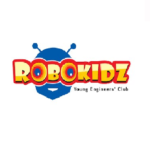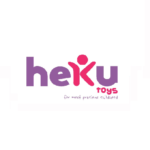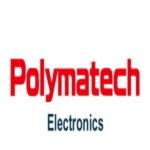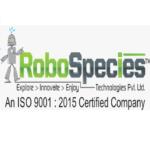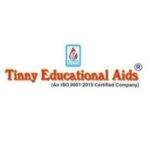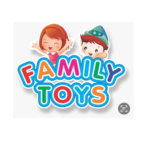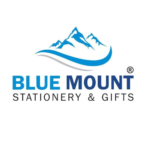EPR certification for E- Waste Management | Procedure | Documents
EPR registration for E-Waste management
An EPR authorization is required to manage Extended Producer Responsibility (EPR). Manufacturers are required to submit Form 1 of the Regulations to the CPCB for EPR approval. This online e-waste registration system allows applicants to submit REP permit applications online. The current module, EPR Application module, allows for online application and approval of EPR permits. All participants in this system, including manufacturers, PROs, dismantlers, recyclers and re processors, must register. Manufacturers, PROs, dismantlers, recyclers and renovators add carriers and collection points/centers to this system.
Applicability of the EPR certification for E-Waste management
This includes everyone involved in the sales process, regardless of sales method. Examples include resellers as producers, retailers, and online retailers.
(i) Manufacture and sale of electrical and electronic equipment and related parts, accessories and spare parts under our brand.
(ii) sell its own brand for the sale of consumables, spare parts, and spare parts from other suppliers or manufacturers for assembled electrical and electronic equipment;
(iii) Offer to sell imported electrical and electronic products, including parts, consumables, accessories and spare parts.
Responsibilities of the Producers’ concerning EPR registration
- Registration on the portal.
- This portal can be used to identify and implement Extended Producer Responsibility targets in accordance with Annex III and Annex IV.
- Use media, publications, advertisements, posters, or other forms of communication to raise awareness.
- Annual and quarterly returns must be submitted in the format specified on the website by the end of the next month of the relevant quarter or year.
Responsibilities of the Manufacturers’ concerning EPR certification
- Sign up for a profile on the platform.
- Manufacturing electrical and electronic equipment generates electronic waste that must be collected and recycled or disposed off.
- Please submit your annual and quarterly returns on the Website using the forms provided as soon as possible after the end of the month following the quarter or year to which your tax return relates.
Expected EPR certification delivery time period
As per the Electronic Waste Registration Act, REP permits must be issued by the CPCB within 120 days of receipt of the complete application. The CPCB may review incomplete applications and issue a checklist within 25 days.
Documents required to apply EPR Registration for E-Waste management
- IEC Copy (Export & Import Code)
- GST Copy
- Pan Card
- Certificate of Incorporation of Pvt. Ltd.
- Last ten years’ sales detail of product if any sale previous (Quantity & Weight-Year Wise)
- Product details with model number
- Country of origin
- Contact details – Telephone, Email ID & Mobile Number
Process for renewal of the EPR certification for E-Waste
EPR certificates for electronic waste must be renewed after a validity period of five years. Here are the steps to renew your EPR WEEE registration certificate:
To obtain an extension, you must file Form 1 within 60 days of expiration. The extension will be considered after the compliance report is verified by the Central Environmental Protection Board or the concerned Environmental Protection Board.
Your renewal application will be approved if it does not violate any admission requirements. The Central Environmental Protection Authority records these facts in the register.
Responsibilities of the license holder after grant of EPR certification for E-Waste:
- RoHS registration holders must have technical documentation for inspection purposes.
- Please notify Annex A to the competent authority before placing a new product on the market.
- RoHS information must be included in the product booklet or brochure. Manufacturers must keep records of how e-waste is disposed of. Businesses that recycle materials must also comply with this requirement.
- According to Form 2 of these regulations, manufacturers have to track their e-waste and provide it to the CPCB during inspection.
- Accumulation techniques or procedures must be developed in accordance with an approved REP plan.
- Manufacturers are required to submit their annual return in the specified format (Form 3) to the CPCB by June 30 of the year following the end of the financial year. Something that involves returns.
- Manufacturers and producers must follow the EPR Certification Registration Plan for Electronic Equipment.
Importance of EPR Authorization’s for E-Waste management
- Thanks to the circular economy, electronic items become more robust, repairable and recyclable, reducing their environmental impact throughout the product’s lifespan.
- Manufacturers are responsible for disposing of old waste.
- Reduce the amount of e-waste that is improperly disposed of or sent to developing countries for hazardous recycling.
- Expanding the recycling sector, creating jobs and reducing the use of virgin materials can have positive economic effects.
- By shifting the cost of processing e-waste to manufacturers, we can reduce waste generation and increase sustainability.
- Laws and policies can vary widely from country to country and region to region, depending on aspects such as enforcement, public awareness, and stakeholder participation.
- In the REP system, companies are responsible for each stage of the product lifecycle. These programs make it easier to achieve your collection and restoration goals.
- Producer Responsibility Organizations (PROs) are often given responsibility by manufacturers and producers. This ensures sufficient funding, allows smaller municipalities to work together, and makes recycling economical.
- EPR is a powerful policy tool that encourages companies to move towards circular economy models to improve their products.
Our Partners
We believe in building a strong customer network and contributing to the ecosystem for mutual benefit. Some of our valued clients include:

